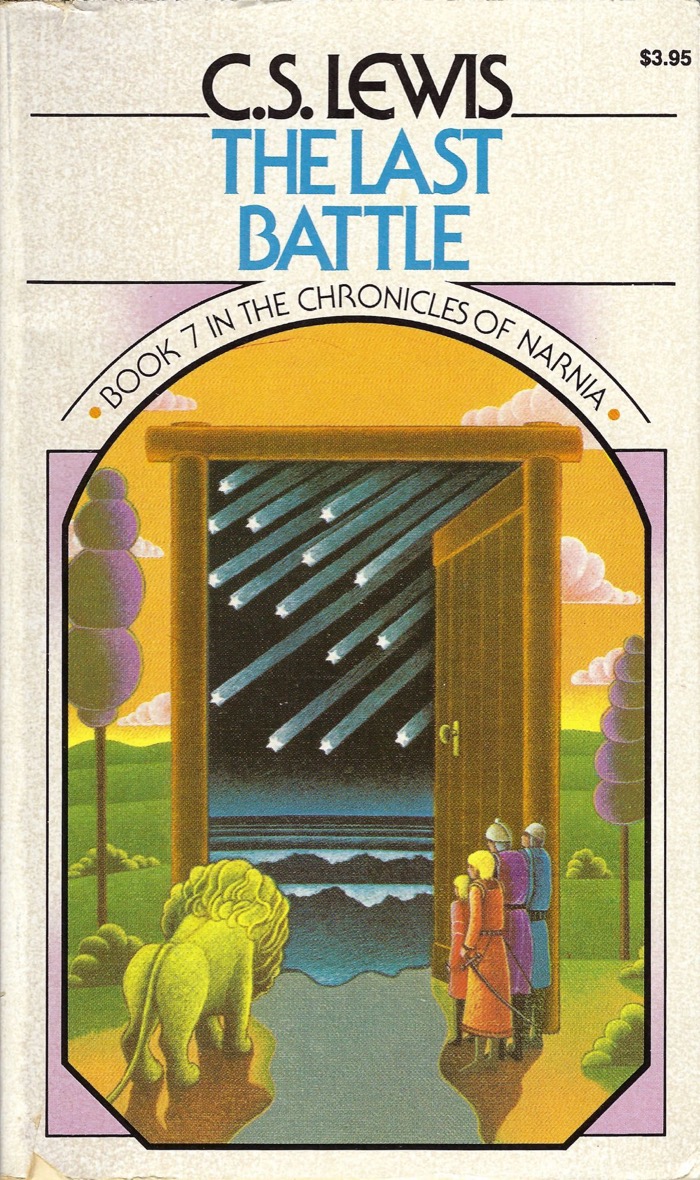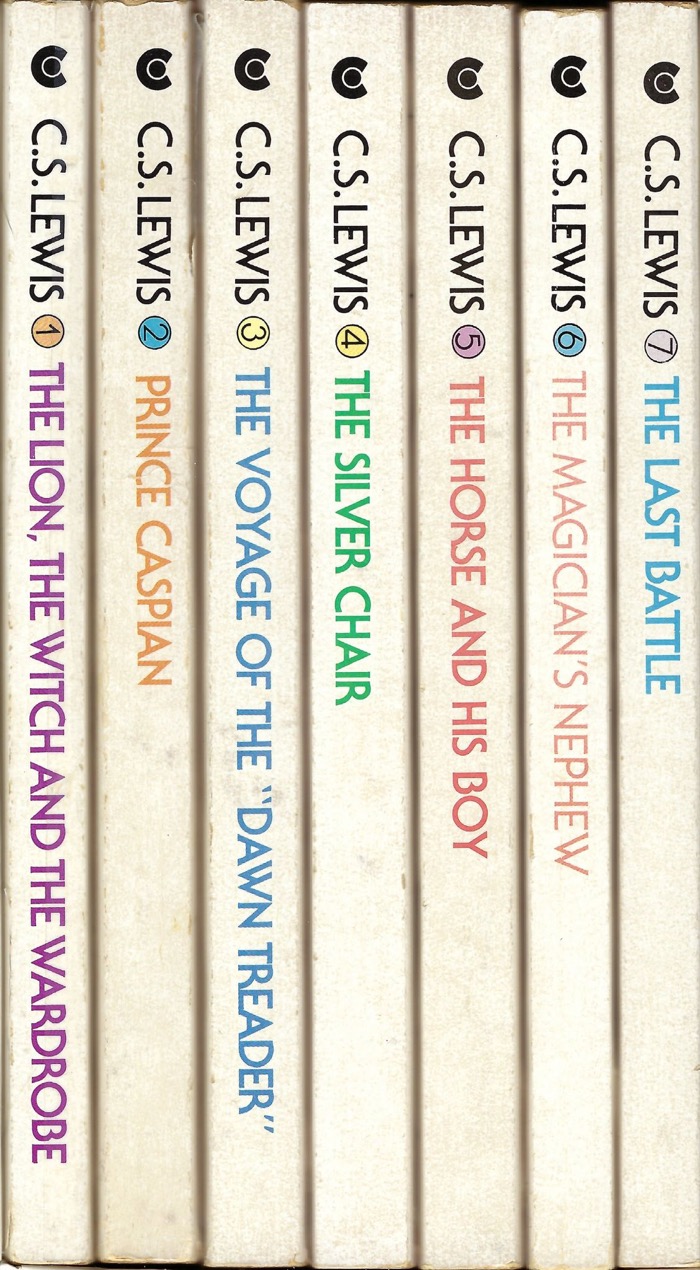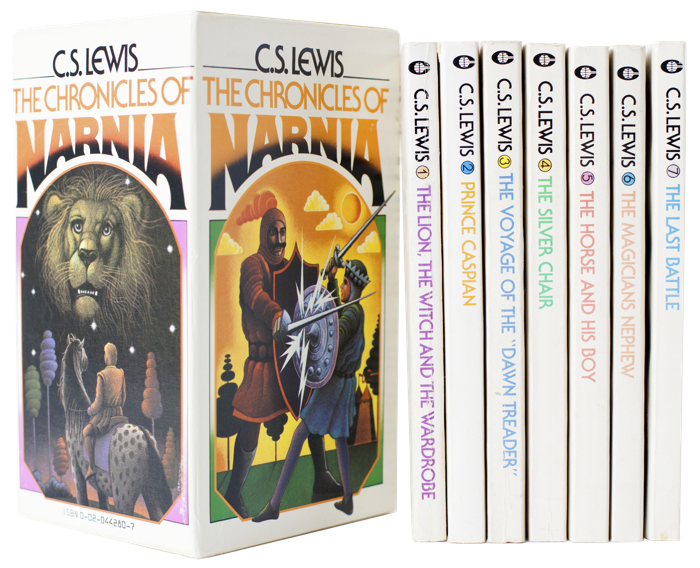The Last Battle
Series: The Chronicles of Narnia 7
Reviewed date: 2005 Apr 6
184 pages
Some people say there are two ways to read The Chronicles of Narnia: in order of publication, or in order of internal chronology. Those people are wrong. The is only one way to read them: in order of publication. [Edit 2023 Aug 31: I'm less dogmatic now about reading the books in publication order, with the exception that The Lion, the Witch, and the Wardrobe simply must be read first. After that the others can be read in any order.]
The boxed set I borrowed is one of the newfangled "modern" sets that is misordered. The books being borrowed I was obligated not to renumber them with a magic marker, but I did read them in the correct order:
- The Lion, the Witch, and the Wardrobe
- Prince Caspian
- The Voyage of the Dawn Treader
- The Silver Chair
- The Horse and His Boy
- The Magician's Nephew
- The Last Battle
[Edit 2023 Aug 31: I have since acquired a properly-ordered set, and the cover art is from that set.
The Chronicles of Narnia are superb children's books and I recommend them to any child. They are rather simplistic for adults, and as they have largely passed out of the collective consciousness of Western culture I see no reason to recommend them on general principles of good cultural citizenship. Read them to your kids, definitely, but otherwise don't bother.
Of the seven books The Lion, the Witch, and the Wardrobe has the most direct biblical allegory. Aslan is the Christ figure who sacrifices himself on the hill and subsequently comes back to life to defeat evil. The next three books--Prince Caspian, The Voyage of the Dawn Treader, and The Silver Chair--have subtle biblical parallels but are mainly just fantasy quest novels.
The Horse and His Boy is the best book of the series.
The Magician's Nephew tells of the creation of Narnia; biblical symbolism abounds, but much of the book is an excuse for comedy. And right funny comedy at that. Both you and your kids will be laughing.
The Last Battle tells of the end of Narnia. The symbolism of the Antichrist is strong, and the first half of The Last Battle is the best writing in the whole series. The second half of the book bogs down in the endless descriptions of Aslan's country. Further, The Last Battle is the only book where C.S. Lewis's theology becomes suspect. You can dress it up any way you like, but Lewis clearly indicates that there is more than one way to heaven. In Aslan's country we are surprised to find a Calormene--a sworn enemy of Aslan and pagan worshiper of the false god Tash. He recounts his encounter with the lion Aslan upon reaching Aslan's country:
"I have served [the god] Tash all my days and not [the true god Aslan]. ... But the Glorious One bent down his golden head and touched my forehead with his tongue and said, Son, thou art welcome. But I said, Alas, Lord, I am no son of thine but the servant of Tash. He answered, Child, all the service thou hast done to Tash, I account as service done to me. ... If any man swear by Tash and keep his oath for the oath's sake, it is by me that he has truly sworn, though he know it not, and it is I who reward him."
Besides this one point of theology, the only objectionable material in The Chronicles of Narnia is some politically incorrect racial descriptions. The dark-skinned Calormenes in The Horse and His Boy are clearly derived from Arab Muslims and are portrayed unfailingly in a bad light compared to the light-skinned Narnians and Archenlanders. In The Last Battle some foul-mouthed dwarfs hurl slurs at the Calormenes, including the epithet "Darkie." One must remember that what was acceptable in 1956 is not so acceptable today. Don't take this to mean that the books are racist. Not at all. With the removal of the word "Darkie" (which occurs fewer than a half-dozen times and only in The Last Battle and even there only uttered as an insult spoken by the foul-mouthed) the books are perfectly fine.
I recommend The Chronicles of Narnia to children of all ages.


